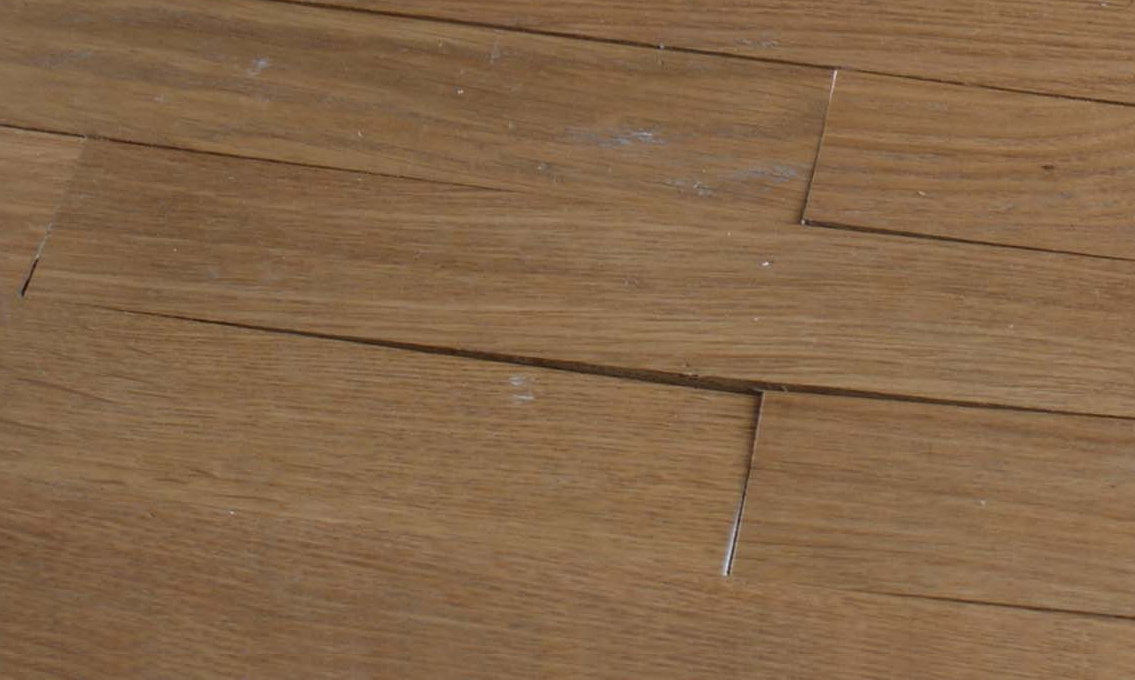Wood floors are a popular and timeless choice for homeowners, adding warmth and elegance to any space. However, one common issue that can arise is the buckling of wood floors. Buckling occurs when the wood planks lift off the subfloor, creating uneven surfaces and compromising the integrity of the flooring. In this blog post, we’ll explore the various reasons why wood floors may buckle and how to prevent and address this issue.
Common Causes of Wood Floor Buckling
1. Moisture and Humidity:
- Excess Moisture: One of the primary reasons for wood floor buckling is exposure to excess moisture. Wood is hygroscopic, meaning it absorbs and releases moisture based on the surrounding environment. When wood absorbs too much moisture, it expands, leading to buckling.
- High Humidity Levels: High humidity levels, especially in areas like basements or bathrooms, can contribute to wood floor buckling. Moisture from the air can be absorbed by the wood, causing it to swell.
2. Water Damage:
- Spills and Leaks: Direct water exposure, whether from spills, leaks, or flooding, can result in wood floor buckling. Water seeping into the wood can cause it to swell, leading to distortion and warping.
- Inadequate Subfloor Protection: Without proper moisture barriers or underlayment, wood floors are vulnerable to water infiltration from the subfloor.
3. Improper Installation:
- Insufficient Expansion Gaps: During installation, it’s crucial to leave expansion gaps around the perimeter of the room and at intervals between planks. Without these gaps, the wood may not have enough space to expand, leading to buckling.
- Inadequate Acclimatization: Wood flooring should be acclimatized to the environment before installation. Failing to allow the wood to adjust to the humidity and temperature of the space can result in buckling.
4. Subfloor Issues:
- Uneven Subfloor: An uneven subfloor can cause stress on the wood planks, leading to buckling. It’s essential to ensure a flat and stable subfloor before installing wood flooring.
- Moisture from Below: Moisture from the subfloor, whether due to poor ventilation or inadequate moisture barriers, can migrate upward and impact the wood flooring.
5. Temperature Fluctuations:
- Extreme Temperature Changes: Rapid or extreme temperature fluctuations can affect the dimensions of the wood. If the temperature changes too quickly, the wood may not have time to adjust, resulting in buckling.
Prevention and Remedies
1. Control Moisture:
- Maintain Proper Humidity Levels: Use dehumidifiers to control indoor humidity levels, especially in areas prone to moisture.
- Promptly Clean Spills: Wipe up spills immediately to prevent water from penetrating the wood.
2. Proper Installation:
- Leave Expansion Gaps: Ensure there are adequate expansion gaps around the perimeter of the room and between planks.
- Acclimatize Wood: Allow the wood flooring to acclimatize to the environment before installation.
3. Subfloor Considerations:
- Ensure a Flat Subfloor: Level the subfloor to minimize stress on the wood planks.
- Install Moisture Barriers: Use appropriate moisture barriers and underlayment to protect the wood from moisture underneath.
4. Address Water Damage Promptly:
- Fix Leaks and Spills: Promptly address any leaks or spills to prevent water damage.
- Use Area Rugs: In areas prone to spills or high traffic, use area rugs to protect the wood flooring.
5. Professional Assessment:
- Consult Professionals: If you notice signs of buckling, consult with flooring professionals to assess the extent of the issue and determine the best course of action.
Conclusion
Wood floor buckling is a common concern, but with proper preventive measures and timely action, it can be minimized or avoided altogether. Controlling moisture, ensuring proper installation, addressing subfloor issues, and promptly dealing with water damage are key steps in maintaining the integrity of your wood floors. By understanding the factors that contribute to buckling, homeowners can enjoy the timeless beauty of wood flooring for years to come.

